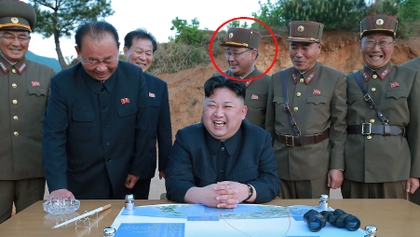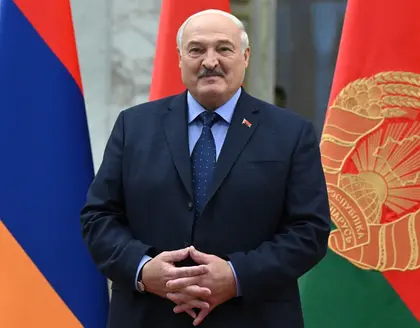Kim Jong-sik, said to be one of North Korea’s top missile development engineers, had accompanied Kim Jong-un during the North Korea-Russia summit last September. He is said to be a First Deputy Director of the North Korean Ministry of Military Industry and, according to South Korea’s National Intelligence Service (NIS), was seen along with several other North Korean military personnel on the front line in Ukraine in August this year.
The NIS said he was sent at the instigation of Kim Jong-un as part of an initiative to assess the real-world combat performance of the KN-23 missile, following several failures of the weapon during Russian attacks on Ukrainian cities, including Kyiv. The intelligence agency said this is part of Pyonyang’s preparations for a future attack on South Korea.
JOIN US ON TELEGRAM
Follow our coverage of the war on the @Kyivpost_official.
According to the report, which was accompanied by a photograph of Kim Jong-sik, apparently dressed in Russian military uniform, he was supervising the launch of KN-23s, North Korea’s analog of the Russian Iskander short-range ballistic missile (SRBM), from a site in occupied Donetsk close to the Russian-Ukrainian front line.
The South Korean NIS photo said to be of Kim-Jong-sik alongside an unknown Russian officer pictured somewhere in Donetsk in August 2024.

Russian Strike Kills One, Injures 16 in Southern Ukraine
The NIS said the photograph had originally been provided by a Ukrainian intelligence agency and that the South Koreans had used AI-powered facial recognition software to confirm his identity.
The KN-23 mobile SRBM is said to have a range of 400-600 kilometers (250-375 miles) with a 500 kilogram (1,100 pound) high explosive warhead and to be capable of evading modern missile defense systems.
On paper, it is said to be a highly accurate system, with a velocity of up to Mach 6 in its terminal phase and to be highly maneuverable able to fly an unpredictable ballistic trajectory that is able to change direction in flight. It is also claimed to use an advanced guidance system to ensure targeting accuracy within a few meters.
That said, the missiles have suffered a significant number of failures when used in Ukraine, with some estimates suggesting as many as 25% have failed after launch. It seems likely, therefore, that Kim Jong-sik’s intervention is to find out whether this comes down to a design-manufacturing quality issue, a transportation-storage problem, Russian operator-related issues, or a combination of all three.
The growing involvement of North Korean direct military support to the Russian armed forces is seen as a worrying trend, not only in terms of the war in Ukraine, but the threat within the Korean Peninsula and the surrounding region. Pyongyang is making use of the war to improve their weaponry in real-life combat situations.
You can also highlight the text and press Ctrl + Enter











